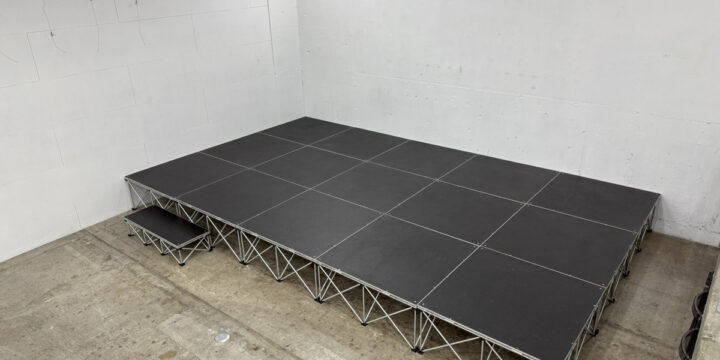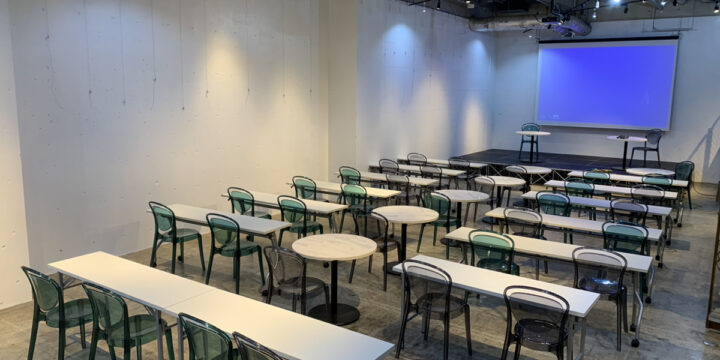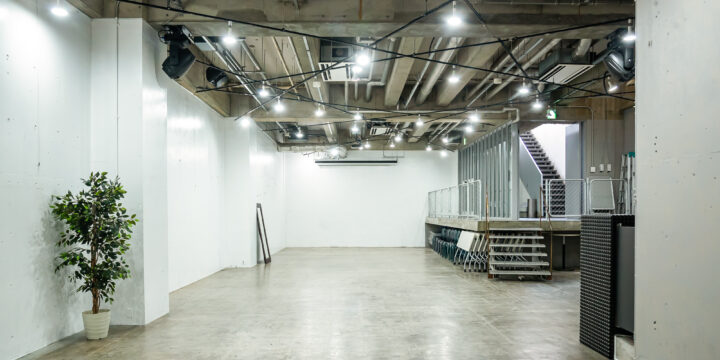“Why the Flow Design of Albe Hall Nagoya Is the Key to a Successful Exhibition or Pop-Up Store
Why Traffic Flow Design Is the Key to a Successful Exhibition or Pop-Up Store
Designing an effective traffic flow is crucial to the success of exhibitions and pop-up stores. Ensuring a smooth experience for visitors while allowing exhibitors to prepare and dismantle efficiently depends largely on how well the venue can accommodate and separate these different flows.
In this article, we will take a detailed look at the traffic flow innovations implemented at Albe Hall Nagoya. With real-world examples from past exhibitions and pop-up events, we’ll explore how thoughtful flow separation benefits both visitors and exhibitors alike.
What Is the Traffic Flow Design of Albe Hall Nagoya?
Albe Hall Nagoya offers excellent traffic flow design options for exhibitions and pop-up events. The venue stands out for its combination of flat indoor access routes and external stairway entry points, allowing flexible separation of pathways based on event objectives and visitor types.
Flat Pathways
The venue structure allows direct, level access from within the building to the event space. This ensures a stress-free setup and breakdown process for exhibitors, particularly when transporting heavy or bulky items using carts or multiple trips.
Moreover, the step-free design is ideal from a universal design standpoint, providing a safe and comfortable experience for wheelchair users, parents with strollers, and individuals with mobility challenges.
Entry via Outdoor Staircase
An additional route leads directly to the hall from the external staircase, serving primarily as the entrance for visitors. This separation from the setup pathways reduces congestion during setup and event hours, allowing for a more comfortable and organized venue experience.
Key Benefits of Separating Traffic Flows
At exhibitions and pop-up stores, venue usability has a significant impact on the overall impression of the event. The following are concrete benefits of traffic flow separation at Albe Hall Nagoya:
1. Prevents Visitor Confusion
Clearly separating entry/exit paths for visitors from logistics paths for setup/dismantling avoids encounters with equipment or blocked routes. This helps prevent accidents and creates a smoother visitor experience.
2. Boosts Efficiency for Exhibitor Logistics
The flat pathway design is a major advantage for exhibitors managing large quantities of fixtures or display items. Even oversized shelving and equipment can be moved in with minimal stress, reducing physical strain and time.
3. Increases Event Planning Flexibility
Flexible traffic design enables optimized space layouts depending on the event’s scale or theme. With carefully designed visitor flows, booth navigation and average stay time can be managed more effectively.
4. Supports Universal Accessibility
Step-free paths ensure that all attendees—elderly, disabled, or those with small children—can enter and exit comfortably. As attendee demographics diversify, creating an inclusive environment becomes an essential strength.
Real-World Examples of Flow Design in Action
Below are examples of how Albe Hall Nagoya’s traffic flow design has been applied to past exhibitions and pop-up events:
Case Study 1: Pop-Up Store for a Local Apparel Brand
A limited-time pop-up store by a local fashion label implemented the following flow design:
-
Setup: From 8 AM, contractors used the flat access route to efficiently move in racks and display fixtures.
-
Visitor Entry: After opening at 11 AM, guests were directed through the outdoor staircase, ensuring a direct and smooth transition into the hall.
-
Guidance Support: Staff at the entrance assisted guests with strollers or wheelchairs, guiding them to the flat access point.
Thanks to this setup, despite welcoming over 300 visitors in a single day, the event was free of confusion and received high marks for guest satisfaction.
Case Study 2: Handcrafted Goods & Accessories Fair
A curated sales event featuring multiple creators used distinct pathways for exhibitors and guests:
-
Exhibitors entered through the flat indoor route for setup and installation.
-
Visitors entered smoothly from the external staircase after the event opened.
-
Clear path layouts within the venue helped avoid crowding.
Notably, the separation of setup and visitor routes prevented any logistical interference, a point praised by both organizers and vendors.
Key Tips for Optimizing Flow Design at Albe Hall Nagoya
To make the most of Albe Hall Nagoya, consider the following recommendations:
-
Pre-Check Setup Routes & Schedule
Share clear guidance with exhibitors on using the flat route. Stagger setup times to avoid congestion and improve efficiency. -
Plan Visitor Flow Strategically
Use the outdoor stairway as the primary visitor entrance. If large crowds are expected, consider timed entry slots or ticket distribution. -
Signage for Universal Access
Install directional signs and floor indicators near the flat route to assist guests with strollers or wheelchairs in navigating easily. -
Ensure Emergency Exit Planning
Confirm that all traffic routes can also serve as evacuation paths in the event of natural disasters or medical emergencies.
Conclusion
Albe Hall Nagoya is a highly versatile venue, offering flexible traffic flow designs suitable for various events such as exhibitions and pop-up shops. By combining flat and stairway routes, the venue supports both efficient logistics and an enhanced visitor experience.
The way traffic is designed can transform the perception of an event. For exhibitors, it means ease of setup; for guests, it ensures a pleasant visit. Albe Hall Nagoya makes both possible.
If you’re planning an event, consider evaluating venues from the perspective of traffic flow design—it might be the key to your event’s success.




